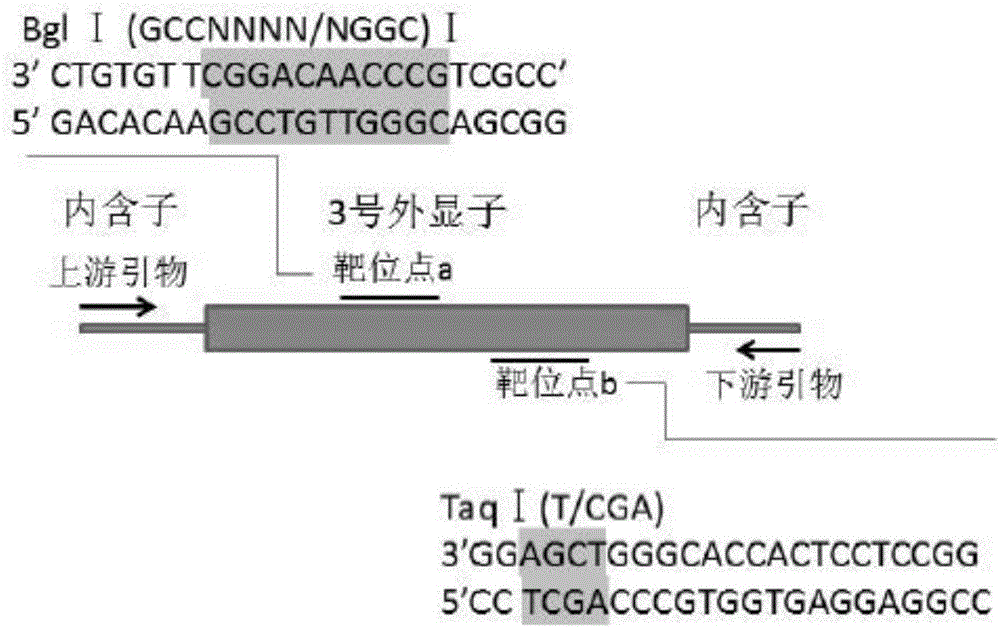Wnt16 gene deletion type zebra fish
A gene deletion, zebrafish technology, applied in the field of gene knockout, can solve the problems of low efficiency of targeting technology and high off-target rate
- Summary
- Abstract
- Description
- Claims
- Application Information
AI Technical Summary
Problems solved by technology
Method used
Image
Examples
Embodiment Construction
[0084] The present invention will be further described below in conjunction with accompanying drawing:
[0085] Include the following steps:
[0086] Step 1: CRISPR / Cas9 gene knockout target site design
[0087] Query the genomic DNA sequence and functional domain of the zebrafish wnt16 gene on the GenBankTM, Ensembl or UCSC databases, and design a pair of target sites for the wnt16 gene according to the principle of CRISPR / Cas knockout. The selection of the target sites must follow the 5'- 20bp-NGG-3' standard: the GG dinucleotide at the 5' end is part of the T7 promoter, and there is no such restriction when designing the target site, but it must be ensured that the 3' end of the target site is NGG, and the target site The selection must ensure that the insertion or deletion of bases at the target site can affect the entire domain of the wnt16 gene, thereby altering gene expression,
[0088] Two pairs of specific PCR primers are as follows:
[0089] F1 (target site a forw...
PUM
 Login to View More
Login to View More Abstract
Description
Claims
Application Information
 Login to View More
Login to View More - R&D
- Intellectual Property
- Life Sciences
- Materials
- Tech Scout
- Unparalleled Data Quality
- Higher Quality Content
- 60% Fewer Hallucinations
Browse by: Latest US Patents, China's latest patents, Technical Efficacy Thesaurus, Application Domain, Technology Topic, Popular Technical Reports.
© 2025 PatSnap. All rights reserved.Legal|Privacy policy|Modern Slavery Act Transparency Statement|Sitemap|About US| Contact US: help@patsnap.com



